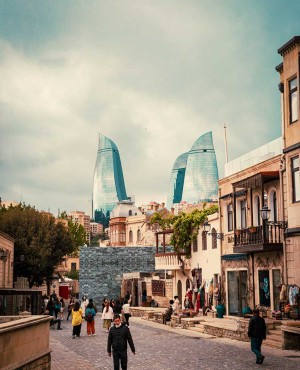
Baku – Southeastern Azerbaijan is home to a multilingual community that continuously works on protecting and preserving its ethnic culture, beliefs, and traditions. These people are the Talysh indigenous group who speaks a language that is vulnerable according to UNESCO. However, it is not only their language that is a source of worry for their people. As the communities grow into a more multicultural one that practices the more dominant Azerbaijani culture, many of the older Talysh members are placed in the difficult position of keeping their cultural identity intact, active, and relevant for the younger generations. Discover how the people bridge their ancestral history to their present lives.
Village Life
In the various districts where the Talysh indigenous communities are located, it is no surprise that outsiders are welcomed to a close-knit community with traces of age-old traditions. For instance, in Orand, walking through the village seems like a trip back in time. In this rural landscape, getting lost in the beauty of the traditional houses also opens one’s eyes to how the Talysh connected them with the present through the use of more modern materials. Also, as the Talysh people are mostly agriculturists, they cultivate various crops such as rice, tea, and citrus fruits. It is no surprise that many Talysh also want to share their village life with others. Furthermore, there is no harm in trying to learn more about the history of the people. One may visit various historical and sacred sites in the region called pir. It is one way to see how the Talysh continues to live and survive as an active indigenous community in Azerbaijan.
Connect with food and music
The Talysh people are famous for their music that transcends generations and ethnic backgrounds. One of the better-known Talysh musical ensembles is the Khovon, more popularly known as the Talysh Grandmas. They are members of the community who let the rest of Azerbaijan fall in love with their Talysh culture. The Talysh Grandmas sing songs in the Talysh language.
Moreover, culinary traditions have continuously been passed on throughout Talysh villages. Even outsiders can get a taste of these savory dishes. One can try participating in making tənu, which is bread cooked in a tandoor oven. Maybe also sample a plate of lyavyangi, which is a dish named after a mixture of sweet and sour fruit paste with onions and ground walnuts, stuffed inside chicken or fish and baked in a tandoor oven. Like in the Lenkorani, the people are famous for their kutum lyavyangi or stuffed Caspian carp; or perhaps, a stuffed chicken way up in the mountain regions.
Each of those delicacies connects the modern Talysh to their ancestors while keeping their ethnic identity alive.
Sadly, however, the struggles of the Talysh people are not unique. It is a common concern of many indigenous groups around the world. That is why it is important for more engaged participation from the majority to understand, record, and encourage a more active view of indigenous traditions. After all, studying Talysh crafts, delicacies, beliefs, and language help a larger audience comprehend the indigenous community’s way of life.
Photo by Orxan Musayev on Unsplash, https://unsplash.com/@orkhnix



